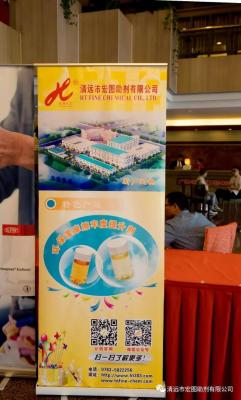1. What is the most commonly used auxiliary in textile printing and dyeing?
Surfactant, of course!
In the whole dyeing and finishing process, surfactants are indispensable in pretreatment, printing and finishing.
Surfactants can greatly improve the printing and dyeing process and the performance of textile products.
2. What is a surfactant?
① Definition:
Surfactant is a kind of substance that can significantly reduce the surface tension or interfacial tension of water. Surfactant solution has the functions of wetting, permeating, emulsifying, dispersing, solubilizing, foaming and defoaming. It is used as detergent, leveling agent, penetrating agent, emulsifier, softening agent, antistatic agent in dyeing and finishing.
② Molecular Structure Characteristics:
They all have the characteristics of positive adsorption and bulk characteristics in water dissolution.
3. The Application of Surfactants in Textile Printing and Dyeing
Different types of surfactants have their own functions in printing and dyeing processing. Their advantages and disadvantages can be roughly summarized as follows:
① Anionic Surfactants for Printing and Dyeing
Anionic surfactants can generally be divided into four categories, namely carboxylate, sulfonate, sulfate and phosphate.
Anionic surfactants are with good dispersion, decontamination and solubilization ability. They can be used as washing aid, scouring aid, penetrant, wetting agent, emulsifier, dispersant, etc.
The Universality of Anionic Surfactants:
Generally, they cannot be used in the same bath with cationic dyes and auxiliaries, otherwise insoluble substances may be produced. Their affinity to cellulose fiber is small, but the affinity to protein fiber is greater in acidic liquid. The stability of acid, alkali and hard water varies with different varieties. The aqueous solution of anionic surfactants is generally alkaline to neutral.
② Cationic Surfactants for Printing and Dyeing
Cationic surfactants can be divided into ammonium salts, quaternary ammonium salts and heterocycles according to the position of nitrogen atoms in molecules.
Cationic surfactants have poor detergency, so they are rarely used as cleaning agents. The reason is that the substrate surface of the object to be cleaned is usually negatively charged, while cationic surfactants are positively charged. Because of electrostatic attraction, the substrate surface is hydrophobic, which is not conducive to washing and even has a reverse effect. But this kind of surfactant has good antistatic property, softening property, good sterilization and disinfection ability. Therefore, cationic surfactants are mainly used as fabric softener, acrylic dyeing leveler, antibacterial mildew inhibitor, fixing agent, antistatic agent, etc.
③ Amphoteric Surfactants for Printing and Dyeing
Among all kinds of surfactants, amphoteric surfactants are developing at the fastest speed in recent years. They can be divided into betaine type and amino acid type.
Amphoteric surfactants have complex structure and the cost is high, but they have low irritation to skin, strong bactericidal power, strong foaming power, strong biodegradability and good compatibility with anionic surfactants.
In printing and dyeing processing, amphoteric surfactants have shown the following excellent characteristics:
They are stable to hard water, resistant to acid, alkali and various metal ions. They have good synergistic effect with other surfactants and can have one-bath treatment with many dye auxiliaries.
They have excellent softening property and antistatic property. All kinds of fibers and fabrics are soft and comfortable after treatment.
They have good levelness. They can be used as excellent leveling agents when dyeing many kinds of fibers, especially wool fibers.
They have good decontamination, foaming and emulsifying effects and good buffer ability to acid and alkali. In addition to serving as fiber wetting and detergent, they also have a protective effect on fibers.
④ Nonionic Surfactants for Printing and Dyeing
Nonionic surfactants are classified into polyethylene glycol type and polyol type.
Nonionic surfactants exist in molecular state in solution with high stability. They are not easily affected by strong electrolytes. They have acid resistance, alkali resistance, good compatibility with other types of surfactants, good solubility in water and organic solvents and no strong adsorption on solid surface.
They have defoaming, emulsifying, cleaning and dispersing effects. Among them, fatty amides and polyoxyethylene dialkyl ethers are the main defoamers. There are three series of emulsifiers: alkylphenol polyoxyethylene ethers (OP series), fatty acid anhydrous sorbitan esters (S series) and poly Oxyethylene fatty acid sorbitan esters (T series). Leveling agents are peregal O, peregal O-15, ect.



 English
English  日本語
日本語  Español
Español  tiếng việt
tiếng việt  Türkçe
Türkçe  ไทย
ไทย  українська
українська  हिंदी
हिंदी  বাঙালি
বাঙালি  اردو
اردو 

